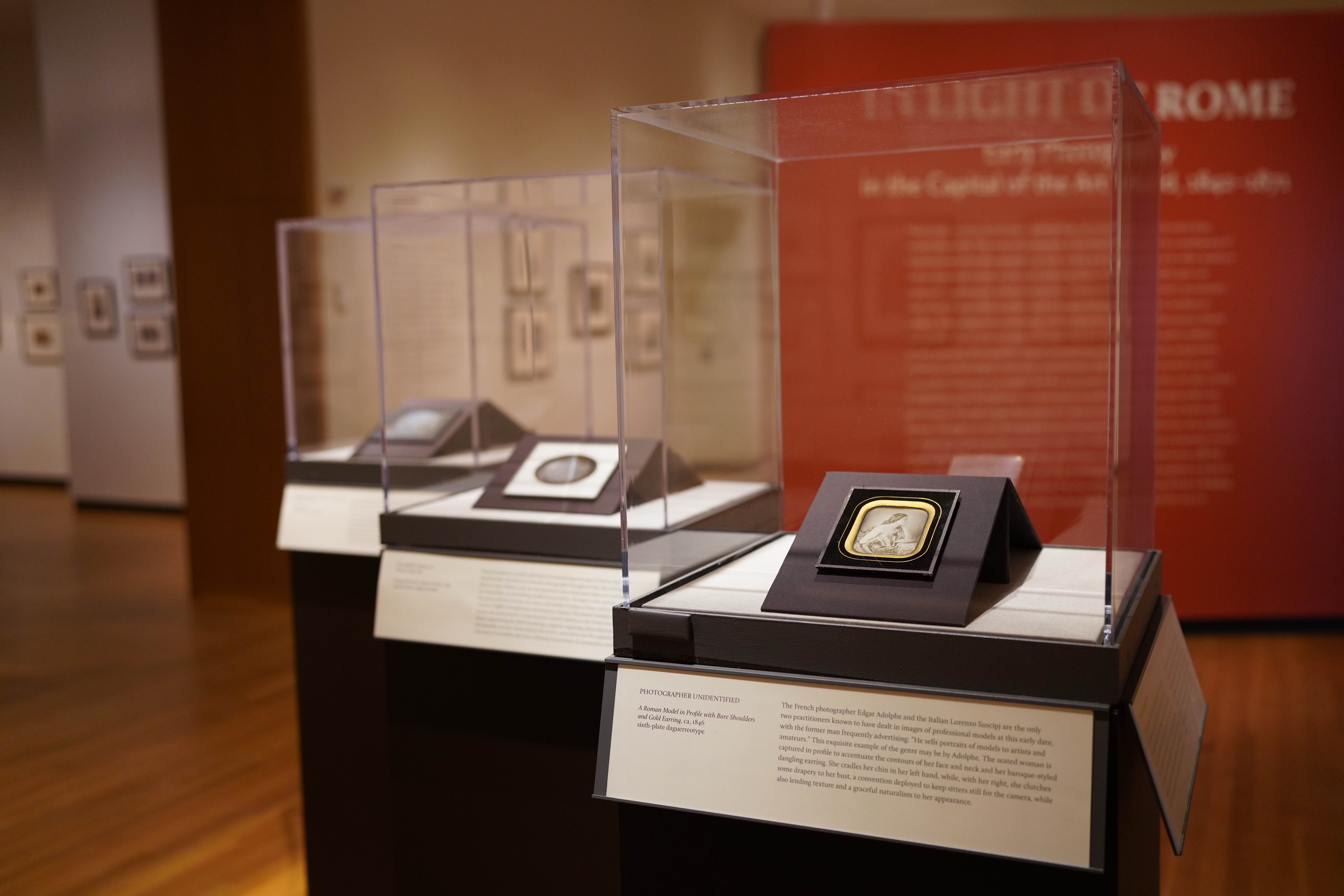“In Light of Rome” brings “exceptional” photography collection to the BCMA
February 3, 2023
 Eliza Rhee
Eliza RheeHarpswell resident John McGuigan began his collection of early Roman photography as something of a side project to his work as an independent art historian. Now, more than a hundred of these photographs fill the Halford Gallery and the Bernard and Barbro Osher Gallery on the first floor of the Bowdoin College Museum of Art (BCMA), representing one of the most comprehensive collections of its kind.
First opened at the BCMA on December 8, the new exhibit “In Light of Rome: Early Photography in the Capital of the Art World, 1842-1871” is the culmination of a three year collaboration between McGuigan and BCMA Co-Director Frank Goodyear.
McGuigan, an expert on 19th century Italian art, was new to photography upon beginning this project. In order to fill the gaps in his knowledge and gain a better understanding of his collection, he reached out to Goodyear, who was formerly the photography curator at the Smithsonian National Portrait Gallery and professor of the history of photography at George Washington University. Goodyear was impressed by the works in McGuigan’s collection.
“I mean, there’s literally not a museum collection or other private collections that would rival this particular collection for its breadth and its quality,” Goodyear said. “They’re really exceptional [works].”
The exhibit displays 112 photographs from McGuigan’s collection taken in and around Rome in the first few decades following the invention of photography. In arranging the installation, the two curators aimed to balance artistically compelling photos with the construction of a narrative.
“We really had to sort of pare it down to really not simply [display] the aesthetically most important pictures but also [display] those pictures that help to tell the story we want to tell,” Goodyear said. “How will social, political history commingle with art history, photographic history?”
As art historians, both McGuigan and Goodyear were excited about the collection’s potential to highlight the often overlooked history of Roman photography, which has been less well-known despite Rome’s recognition as a mecca for fine arts such as painting and sculpture.
“One of the things that’s really interesting about the way in which this field has developed over the years is that American, French and English photography take center stage in the conversation, to the exclusion of … photographs that are being made in [other] countries, continents around the world,” Goodyear said.
The collection offers museumgoers the opportunity to see both the technical and artistic development of photography as it blossomed into an artistic tradition of its own in its early years.
“So you have this early, primitive form of photography where people are trying to process it and understand it and create a visual language,” McGuigan said. “And then here [in the 1870s] you have it where it’s a full-blown art form, and they’re trying to interpret it in the most artistic way possible.”
But the exhibition isn’t just focused on shedding light upon the history of photography. “In Light of Rome” offers museumgoers a window into life in Rome during a period of political and social upheaval, as Italian nationalists attempted to free themselves from French control and unify the peninsula, clashing with the interests of the papacy.
“There’s a lot happening at this particular moment,” Goodyear said. “I think that these pictures are really interesting and suggest a great deal about this pivotal moment in Italian history.”
Goodyear emphasized the value of the collection as a resource to Bowdoin students, citing interest from the Italian studies department and Professor of Art and Chair of the Visual Arts Division of the Department of Art Michael Kolster.
Additionally, Goodyear mentioned the BCMA’s efforts to create public programming surrounding the exhibition. A tour of the installation, led by McGuigan, took place in December, and Bowdoin alum Lindsay Harris ’00, the Director of the American Academy of Rome, will be hosting a virtual symposium about the collection in April. The exhibit will be open to the public until June 4, 2023.

Comments
Before submitting a comment, please review our comment policy. Some key points from the policy: